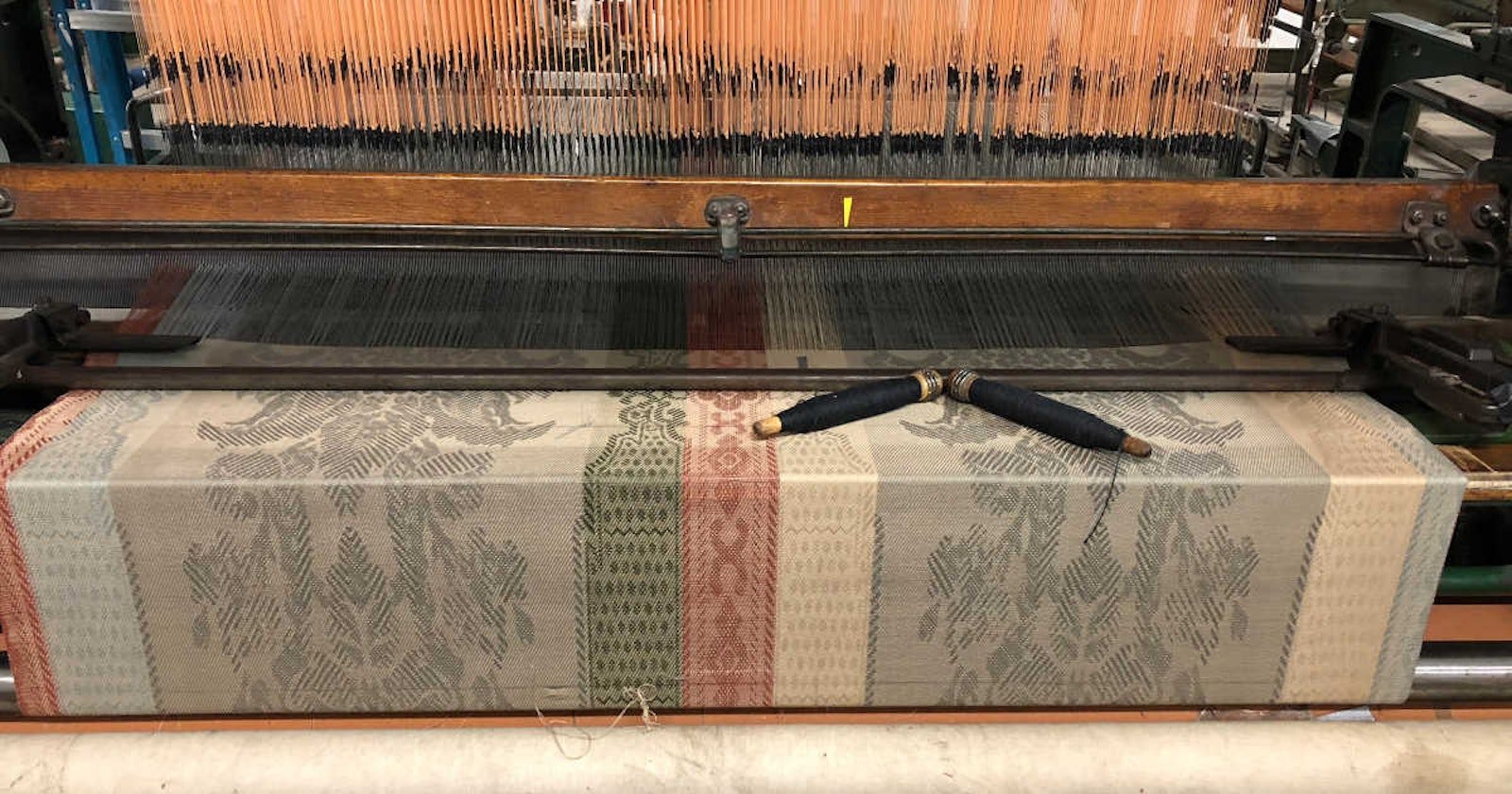I’m something of an expert on traditional North American weaving. I’ve run my weaving mill, Thistle Hill Weavers, for over 30 years, specializing in custom and commissioned weaving. At Thistle Hill, we serve our clients by producing whatever they require using our yarns, and we are known for our historically accurate reproduction textiles. We’ve woven special pieces for private collectors, museums, and even the movies. We use antique handlooms that were running in the textile mills of America—old Crompton and Knowles “W” and “S” looms. We sample and develop fabrics on these handlooms and then produce our textiles on dobby and Jacquard industrial shuttle looms.
In my work as a trained fancy weaver running a job shop similar to those in the 1830s, I often wonder what makes my work similar to or different from those professional weavers. In many ways, much has changed; I have the luxury of running my mill with electric motors and modern yarns, but it is still a balancing act that has good days and bad ones. I can’t tell you how many times things have gone haywire, and I have said to myself, “And they call me a professional weaver?” I imagine that in all eras, all weavers have had those days.
While we know quite a bit about what was woven in the past from draft books, daybooks, and surviving textiles, we don’t know a lot about individual weavers and how they felt about their work. Through advertisements, like the one shown below, we can learn how much yarn clients needed to supply and whether the yarn needed to be plied at home or could be used as singles. We can see that this weaver invested in a loom that was broad enough to weave a coverlet without seaming, but that leaves us with questions. Did he get his investment back? How many coverlets did he need to weave? We can’t know about the relationship of the weaver to his work or his clients.
Advertisement placed by a 19th-century weaver.
We know a bit more about a few of the women who wove at home. Journals and diaries tell us about the everyday weaving that was done for domestic consumption and sometimes for trade. Hannah Hayden is explicit about using cotton instead of linen in this excerpt from her journal, spelling errors and all:
“I have done my work myself only now and then a day ever since last summer . . . . I thought I should make a great deal of cloth but I could not get quite 30 wait of flax so I was obliged to spin cotton and that takes a great while to make a little cloth. I hant hardly made a sheet since I can remember. I have 50 wait of wool that is half spun. I have had so little wool for years past that I hardly know what to do with it . . . . I have got two calico bed quilts almost pieced but Im afraid that we shant get time to quilt them thid fall. I have so much other work to do.”
I sometimes reflect on the trade weavers of the eighteenth and nineteenth centuries and their weaving knowledge.
I hope to learn what I can and send forward that knowledge so that the touchstones of weaving are not lost. Today, I mourn the closing of the Woolrich mill established in the 1830s as I mourn the loss of a partner and friend, because those weavers were keepers of the knowledge. And I rejoice that handweaving in America is enjoying a renaissance. I look at Thistle Hill Weavers and I am proud to produce textiles in America, both in the way they were 100 years ago and in a modern age.
—Rabbit Goody
This article originally appeared as the Endnotes in the March/April 2019 issue of Handwoven. Check it out if you want to read more articles about, and projects inspired by, North American handweaving. You can also find Rabbit Goody’s book Pattern Weaving: Basics for the Handloom here. —Christina


